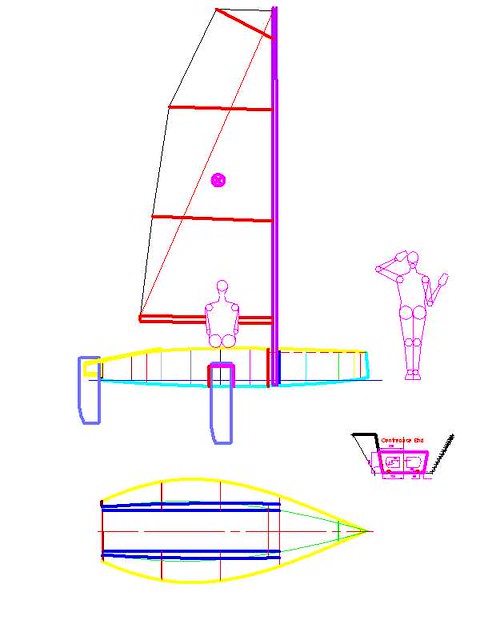Joe Koenecke and his brother built an Electric Quick Canoe.
They then put together a sailing rig and leeboard to see how it would sail.

On returning from the first trip Joe sent me a question
Hey, Mik
I have a sailing question. The first time we sailed the QCE, we had trouble sailing upwind, and coming about. We made two changes: added battens to the sail, and moved the leeboard forward.
The leeboard had been positioned on the “center of effort”. But when we moved it
forward, we sailed better. I’m not exactly sure what effect the battens had, except that the sail seemed to have a better shape.Any thoughts on why she sailed so much better with the leeboard forward of the “center of effort”?
I replied
BINGO
You have discovered a design element that is called “lead” (like I lead her to the cafe).
The centre of effort is an approximation. In reality the front part of the sail develops much more force than the back. Also in the gusts as the sail distorts the centre of effort moves back. Additionally the CE and CLR method is a 2D approximation of a 3D situation.
So we all have a fudge factor called lead where we move the leeboard or centreboard forward to compensate for the approximation.
Brilliant Observation!
MIK
The CE is the geometric centre of the sails.
The CLR is the geometric centre of the boat that is in the water – I find that with a daggerboard boat with a shallow body that you can ignore the boat completely and just use the centreboard or leeboard position.
The centre of sails is where they sails are trying to push the boat sideways.
The centre of the underbody of the boat is what resists the boat going sideways.
If their locations line up the boat will go straight ahead and sail nicely.
If they don’t the boat will want to turn all the time and the person steering will have to fight it.
In general you want the CE just behind the CLR by this amount called “lead” so that the boat will have slight “weather helm” want to turn slightly up towards the wind. This helps windward performance. The opposite situation “lee helm” is almost always bad for overall performance.
Here is the drawing of a new 12 foot dinghy I am designing. The circle with the cross in it is the CE of the sail, see how it is slightly behind the centreboard. I have quite a lot of data from boats I have designed to guess at the “lead” for a particular design based on feedback from sailors and my own experience.

In general something around this size – or a PDRacer or an OzRacer will have an effective “lead” of about 6″ or 150mm. It needs to be slightly more for a leeboard boat.